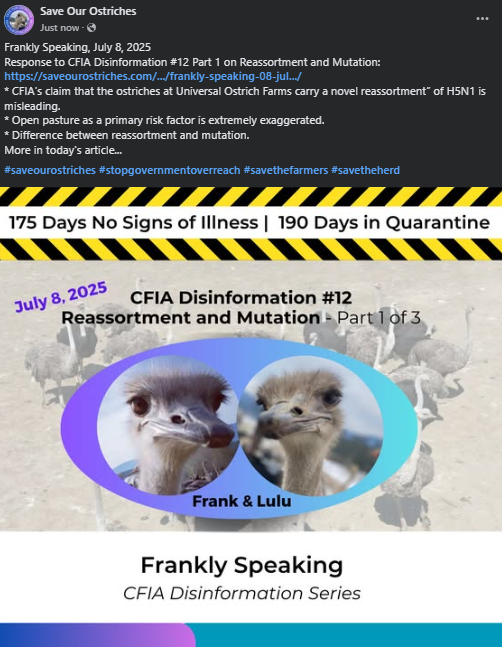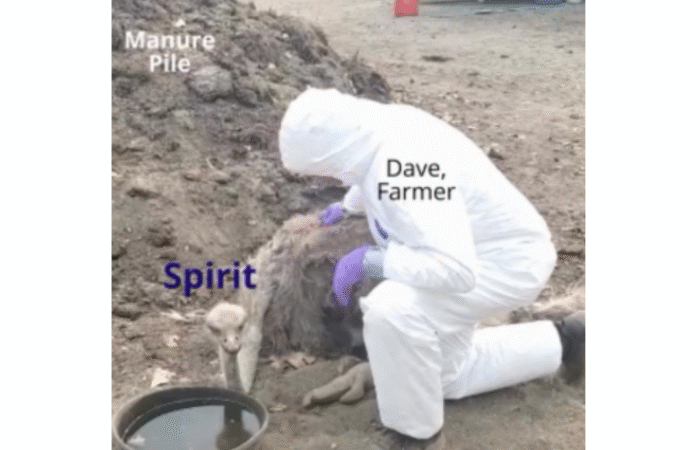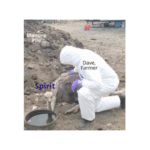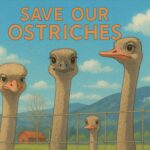July 8, 2025
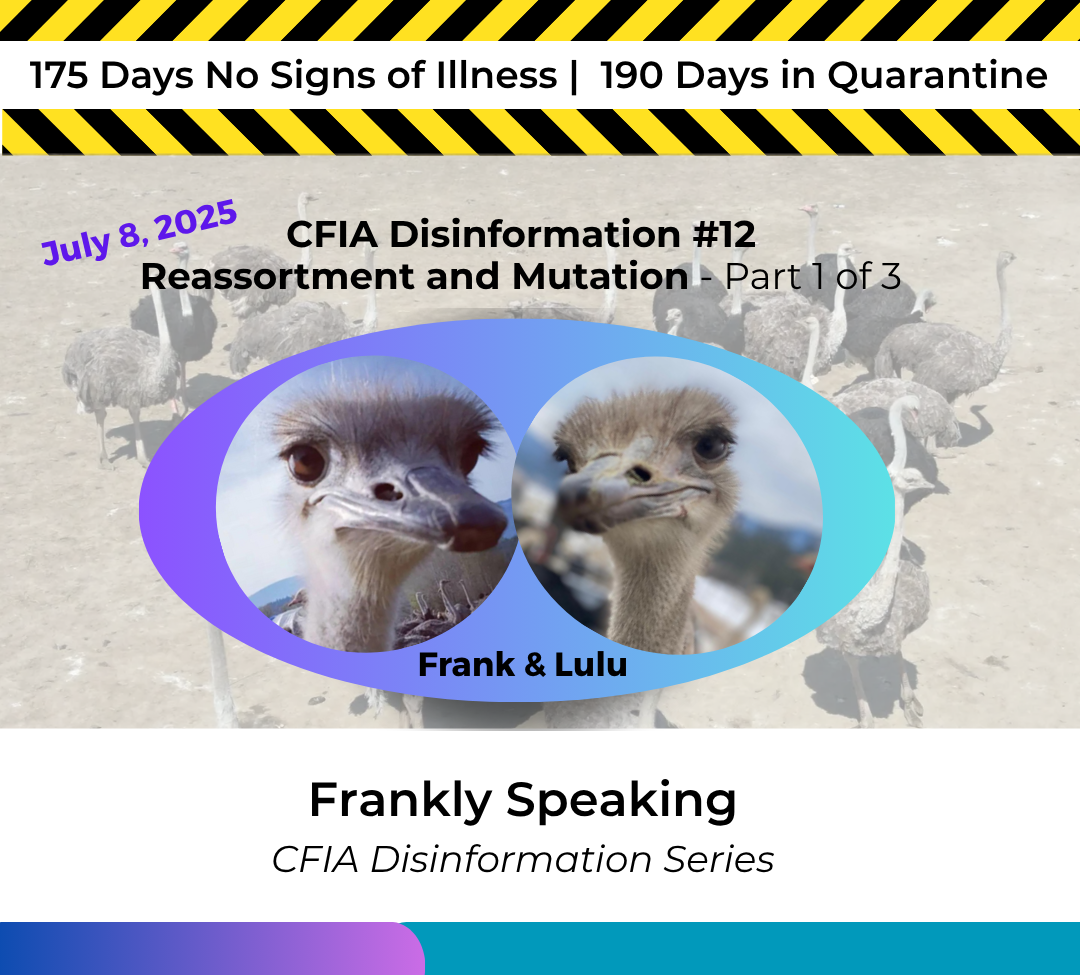
Edgewood, BC
Disinformation Response to two CFIA Statements (May 31, 2025):
- Update on the CFIA’s actions at an HPAI infected premises at a BC ostrich farm
- CFIA’s basis for applying disease control measures at an avian influenza infected ostrich farm
CFIA Disinformation #12 Part 1 of 3 – (HPAI) … increases the risk of reassortment or mutation of the virus, particularly with birds raised in open pasture where there is ongoing exposure to wildlife. CFIA’s National Centre for Foreign Animal Disease (NCFAD) identified that the current HPAI infection in these ostriches is a novel reassortment not seen elsewhere in Canada.
Response: The CFIA’s claim that the ostriches at Universal Ostrich Farms carry a “novel reassortment” of H5N1 is misleading. This is not a unique or unprecedented strain. The assertion that this specific reassortment justifies mass culling is not supported by how nature works. The phrase “novel reassortment” along with “not seen elsewhere in Canada being associated with humans” seems designed to cause fear. It suggests a special danger to people but there is no proof that these ostriches pose that kind of risk.
The above statement implies causality. Saying that HPAI “increases the risk of reassortment or mutation” confuses correlation with causation. The virus itself doesn’t increase the risk; co-infection in suitable hosts and conditions does. HPAI may result from reassortment but doesn’t cause it by merely being present, especially if the reassortment occurs with low pathogenicity strains.
Open pasture as a primary risk factor is extremely exaggerated. While exposure to wild birds is a risk factor for influenza introduction, closed or indoor operations are not immune and even more prone to it. In fact, biosecurity lapses, limited spaces, increased density of animals, lack of the exposure to build natural immunity, equipment sharing, contaminated environment due to artificial ventilation, and staff movement often play a greater role than simple pasture access.
As per CFIA, HPAI outbreaks have occurred in around 530 bird flocks and keep occurring in highly controlled, indoor commercial poultry settings locally and globally. In most of these instances only a few of the birds were only actually test for the presence of H5 and H7 using dubious PCR testing conditions. Interestingly, the CFIA experts have confirmed in cross-examination in Federal Court that the agency has recorded some 100 reassortments of influenza strains in tested commercial flocks.
Most of all the fear-based framing is striking. The wording seems designed to cast open-pasture systems as inherently more dangerous, which might reflect a bias toward industrial or confined poultry operations. Scientific consensus does not universally support that open-pasture systems are the primary driver of HPAI emergence as context, biosecurity practices, and regional wild bird populations matter more.
Additionally, reassortment and mutation are two different aspects and to understand them is critical.
Differences Between Reassortment and Mutation in Viruses
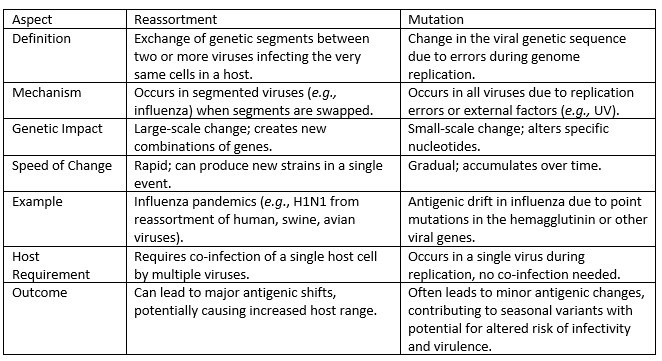
Watch for the next two releases in this 3-part series on reassortment and mutation, for further details.
Lulu has joined Frank … Fed Up with Feds Falsehoods. Tune in regularly for Frankly Speaking episodes in the CFIA Disinformation series.
Media Contact:
Katie Pasitney
Spokesperson, Eldest Daughter, Universal Ostrich Farm
1-250-870-8246
Share This Story
